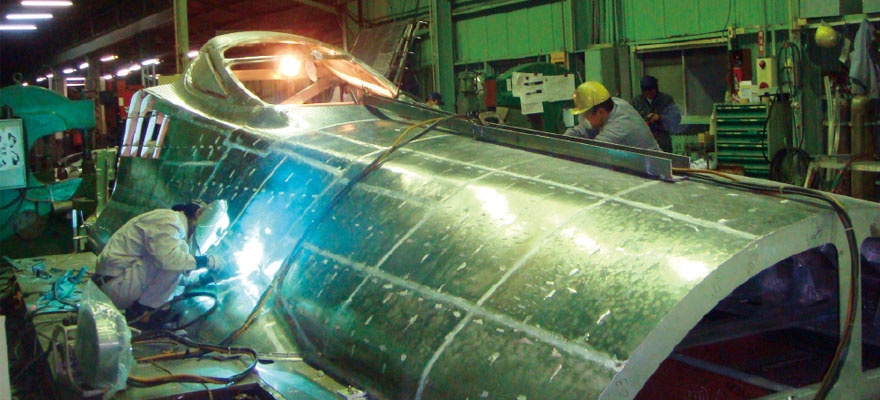Hammering Out the Shinkansen's Face by Hand
Japan's bullet train, the Shinkansen, is one of the most recognized symbols of Japanese engineering prowess. These trains have only become ever more streamlined since they were launched in anticipation of the first Tokyo Olympics in 1964. So it is hard to imagine that a simple hammer can shape the complex curves of this high-tech train's nose. What is even more remarkable is that only one company in Japan, with a mere 40 employees, has employed this technique to produce many of the Shinkansen's distinctive shapes.
Yamashita Kogyosho in Kudamatsu City, Yamaguchi Prefecture, has been hammering out aerodynamic designs for the face of the Shinkansen since 1963. The company's founder, Kiyoto Yamashita, was working in a local garage, where he honed his skill in shaping sheet metal with a hammer. When employees at the nearby Hitachi plant noticed his ability, they recruited him to help build the face of a new high-speed train they were developing—the first 0 series Shinkansen. As popularity of the new train surged, so did Yamashita's responsibilities, leading him to form his own company, which has served as an external contractor for Hitachi ever since.
Crafting the face of the Shinkansen is artisan's work. Sheets of aluminum ranging from 1 to 6 millimeters in thickness are beaten by hand countless times to produce curved panels, which are then welded together to form the train's sleek exterior. Given the large size and relatively low production numbers of these trains, as well as the need for flexibility to make sudden changes, this form of manufacturing is ill-suited to mass production. Rather, attention to detail is paramount: Not only is it challenging enough to achieve the elegant, computer-designed shape, expert welding is crucial to avoiding pinholes or cracks that might compromise the safety of a train that may operate as fast as 320 kilometers per hour.
Now 50 years later, Yamashita Kogyosho has produced the noses of approximately 400 front cars for the Shinkansen. Through its partnership with Hitachi, Yamashita Kogyosho has also forged the faces of high-speed trains running in Taiwan and China, in addition to express trains, monorails and subways not only in Japan but also South Korea, Singapore and Dubai. It has even produced the noses of experimental magnetic levitating trains.
Simply developing the necessary skill to hammer out sheet metal requires approximately 10 years of practice, though training is never truly finished. Two original company members still working there today have received recognition as master craftsmen from the Japanese government, ye tKiyoto Yamashita's son, Tatsuto, who took the reins when his father retired in 2007, recounts how one of them always asserts that he's still not satisfied with his level of skill. Fittingly, the younger Yamashita notes that the company "looks for employees who have patience and are committed to self-training for life."
That is not to say the company isn't modernizing to keep up with changing times. Yamashita explains that he hopes to "use machines wherever possible, freeing craftsmen to focus on more specialized tasks." Indeed, lasers now cut out certain shapes, while other machines automatically create angles in the sheet metal, resulting in a significant reduction in production time.
It took three months to complete the face of the original 0 series Shinkansen, which was just six meters in length. Now Yamashita Kogyosho's craftsmen can complete production of the 15-meter nose of the E5 Hayabusa in only two weeks. Ultimately, Yamashita says, "the human and the hammer are indispensable in making the final adjustments."




